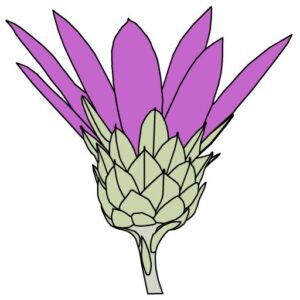German: Pflanzengesellschaften Mitteleuropas. In the beginning the project has been called “Synopse der Vegetation Mitteleuropas”. The Ceplac are a project comprising the first overview of the phanerogamic and macrophytic algae vegetation of Central Europe that is based on comprehensive and detailed tables. The core of the Ceplac is a huge electronic database storing vegetation relevés and their tables, synoptic tables, condensed German texts on the respective units and additional information.
The focus of the Ceplac lies on the vegetation alliances, which are the best characterised and most objective, meaningful and reliable units of the vegetation and therefore the foundation of the system of plant communities. This is partly due to the inflation of unnecessarily described associations – as already Heinz Ellenberg (1956) has stated –, partly to the fact that a lot of associations de facto have to be accepted on formal reasons, although many of them have little differentiating heuristic substance. This applies especially to species-poor communities dominated by a single species, such as most reed and tall-sedge units.
The “resolution” of the synoptic tables as a rule is far beyond association level though, so that most of the associations occuring in Central Europe can be seen or derived from the tables, and also their syntaxonomical value.
The Ceplac are not just a compilation of the existing knowledge but a thorough, critical reconstruction of the system, based on more than 35 years of research and practical experience as well as more than 15 years of teaching at the University of Natural Resources and Life Sciences, Vienna (Boku). The process of building synoptic tables together with my comprehensive outdoor work – I so far have performed more than 5,000 vegetation relevés and mapped greater areas of East Austria – not only helped to find and fill gaps in the existing system, but also led to a intense involvement with the syntaxonomic concept. This resulted in what may be called an extended Braun-Blanquet approach (Braun-Blanquet 1921, 1964), including problematic but common cases such as twin communities and the abovementioned question of the weighting of coverage and dominancy versus presence/absence, questions Braun-Blanquet himself and most of his students and successors somewhat avoided.
The research area covers Germany, Switzerland, Poland, the Czech Republic, Slovakia, Liechtenstein, Austria and Hungary. The alliances, orders and classes of Denmark, the Netherlands, Belgium, Luxembourg, Estonia, Latvia and Lithuania are supposed to be covered, too, as well as of greater parts of the other adjoining regions, especially the United Kingdom, Ireland and Scandinavia. In order to find optimally developed relevés/stands of units that in Central Europe assumingly only occur in an impoverished form, tables from many other countries have been processed.
The Ceplac Pro database version is currently unavailable, because it needs to be updated both technically and regarding its tables and texts, which at present is impossible because of the lack of capacities. In the meantime, selected contents of the Ceplac project will be published on The Synecologist, including items that were not included in the last database version that had been published in 2016.
References
Braun-Blanquet, Josias (1921): Prinzipien einer Systematik der Pflanzengesellschaften auf floristischer Grundlage. – Jb. St. Gallischen Naturwiss. Ges. 57/2: 305-351.
Braun-Blanquet, Josias (1964): Pflanzensoziologie – Grundzüge der Vegetationskunde. (3rd edition). Springer, Berlin Wien New York: 864 pp.
Diran, Rolf (2004): Die “Synopse der Vegetation Mitteleuropas”. – Tuexenia – Mitt. flor.-soz. Arbeitsgem. Neue Serie 24: 373-386.
Diran, Rolf (2016): Die Pflanzengesellschaften Mitteleuropas (Central European Plant Communities – Ceplac), version 2.0.1 (deutschsprachig). Electronical database. Vienna.
Ellenberg, Heinz (1956): Grundlagen der Vegetationsgliederung – Einführung in die Vegetationskunde für Studierende der Hochschulen. – In: Einführung in die Phytologie 4/1 Aufgaben und Methoden der Vegetationskunde Part 1. Eugen Ulmer, Stuttgart: 156 pp.
